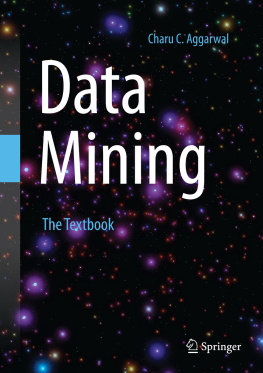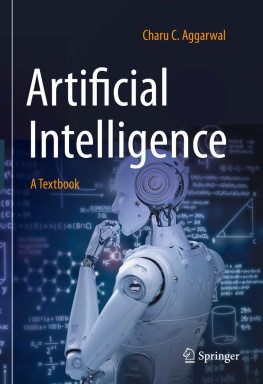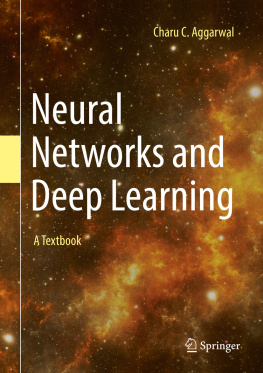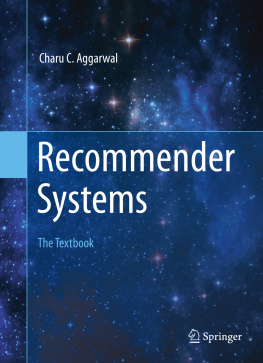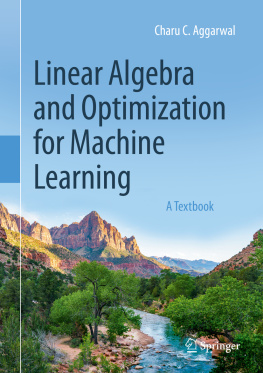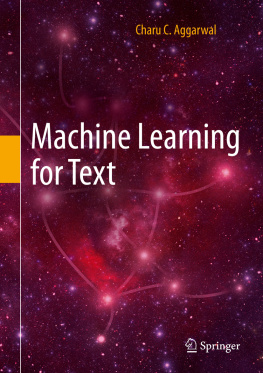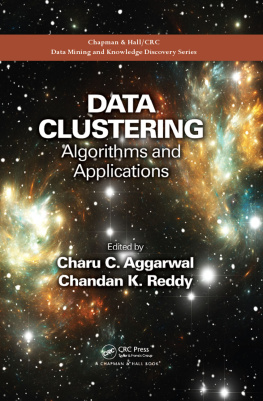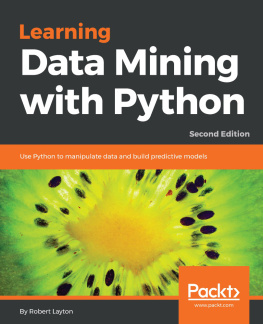Charu C. Aggarwal - Data Mining
Here you can read online Charu C. Aggarwal - Data Mining full text of the book (entire story) in english for free. Download pdf and epub, get meaning, cover and reviews about this ebook. year: 0, publisher: Springer International Publishing, Cham, genre: Computer. Description of the work, (preface) as well as reviews are available. Best literature library LitArk.com created for fans of good reading and offers a wide selection of genres:
Romance novel
Science fiction
Adventure
Detective
Science
History
Home and family
Prose
Art
Politics
Computer
Non-fiction
Religion
Business
Children
Humor
Choose a favorite category and find really read worthwhile books. Enjoy immersion in the world of imagination, feel the emotions of the characters or learn something new for yourself, make an fascinating discovery.
- Book:Data Mining
- Author:
- Publisher:Springer International Publishing, Cham
- Genre:
- Year:0
- Rating:5 / 5
- Favourites:Add to favourites
- Your mark:
- 100
- 1
- 2
- 3
- 4
- 5
Data Mining: summary, description and annotation
We offer to read an annotation, description, summary or preface (depends on what the author of the book "Data Mining" wrote himself). If you haven't found the necessary information about the book — write in the comments, we will try to find it.
Data Mining — read online for free the complete book (whole text) full work
Below is the text of the book, divided by pages. System saving the place of the last page read, allows you to conveniently read the book "Data Mining" online for free, without having to search again every time where you left off. Put a bookmark, and you can go to the page where you finished reading at any time.
Font size:
Interval:
Bookmark:
- World Wide Web: The number of documents on the indexed Web is now on the order of billions, and the invisible Web is much larger. User accesses to such documents create Web access logs at servers and customer behavior profiles at commercial sites. Furthermore, the linked structure of the Web is referred to as the Web graph , which is itself a kind of data. These different types of data are useful in various applications. For example, the Web documents and link structure can be mined to determine associations between different topics on the Web. On the other hand, user access logs can be mined to determine frequent patterns of accesses or unusual patterns of possibly unwarranted behavior.
- Financial interactions: Most common transactions of everyday life, such as using an automated teller machine (ATM) card or a credit card, can create data in an automated way. Such transactions can be mined for many useful insights such as fraud or other unusual activity.
- User interactions: Many forms of user interactions create large volumes of data. For example, the use of a telephone typically creates a record at the telecommunication company with details about the duration and destination of the call. Many phone companies routinely analyze such data to determine relevant patterns of behavior that can be used to make decisions about network capacity, promotions, pricing, or customer targeting.
- Sensor technologies and the Internet of Things: A recent trend is the development of low-cost wearable sensors, smartphones, and other smart devices that can communicate with one another. By one estimate, the number of such devices exceeded the number of people on the planet in 2008 [30]. The implications of such massive data collection are significant for mining algorithms.
Font size:
Interval:
Bookmark:
Similar books «Data Mining»
Look at similar books to Data Mining. We have selected literature similar in name and meaning in the hope of providing readers with more options to find new, interesting, not yet read works.
Discussion, reviews of the book Data Mining and just readers' own opinions. Leave your comments, write what you think about the work, its meaning or the main characters. Specify what exactly you liked and what you didn't like, and why you think so.

